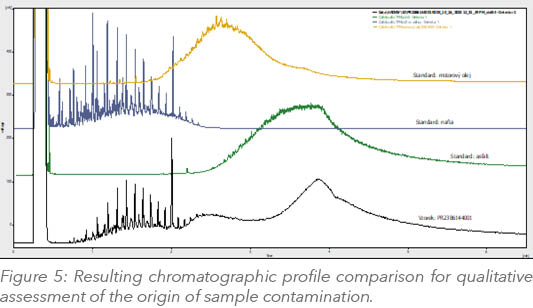Resolving False Positive Detections of Petroleum Hydrocarbons Originating from Natural Organics
Published: April 2024
Download PDF
EnviroMail_14_Europe_Resolving False Positive Detections of Petroleum Hydrocarbons Originating from Natural Organics
Wood waste, manure, and organic-rich soils such as peat or compost are typical and well-known sources of false positive interferences in the determination of total petroleum hydrocarbons (TPH; C10-C40) due to the presence of organic compounds of natural origin.
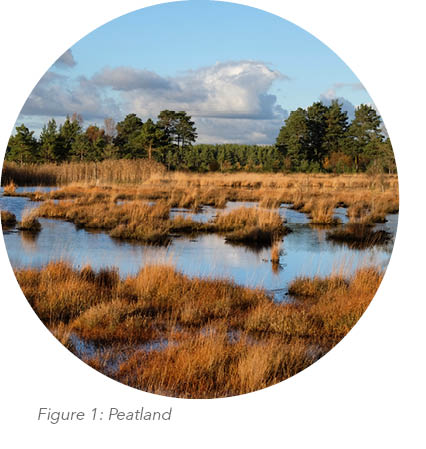 Clean-up of the extract with Florisil should achieve the removal of most of the interfering compounds of natural origin, based on the different polarity of these compounds from hydrocarbons originating from mineral oils. In some cases, however, the adsorption capacity of the Florisil used may not be sufficient.
Clean-up of the extract with Florisil should achieve the removal of most of the interfering compounds of natural origin, based on the different polarity of these compounds from hydrocarbons originating from mineral oils. In some cases, however, the adsorption capacity of the Florisil used may not be sufficient.Importance of C10-C40 determination
The determination of petroleum hydrocarbons, i.e. non-polar extractables in the C10-C40 range, sometimes referred to as TPH, is a non-selective method where the compounds tend to be part of different mixtures.
The content of C10-C40 hydrocarbons is a legally monitored parameter. In the European Union, it is Council Decision 2003/33/EC, which sets out the conditions under which waste can be disposed of in the relevant group of landfills. The limit value of C10-C40 for inert waste (500 mg/kg) is specified.
TPH false positives due to natural substances
The principle of the analysis of solid or aqueous matrices for the determination of C10-C40 is their extraction into an organic solvent, where the Florisil-purified extract is analysed on a gas chromatograph with a flame ionisation detector (GC-FID). The total peak area between n-decane (n-C10H22) and n-tetracontane (n-C40H82) is measured.
According to EN ISO 16703, EN ISO 9377-2 and EN 14039, all hydrocarbons in the distillation range C10-C40 with a boiling point between 175°C and 525°C, n-alkanes from C10H22 to C40H82, iso-alkanes, cyclo-alkanes, alkylbenzenes, alkylnaphthalenes and polycyclic aromatic hydrocarbons are determined as hydrocarbons in the distillation range C10-C40, unless they are adsorbed on Florisil during clean-up.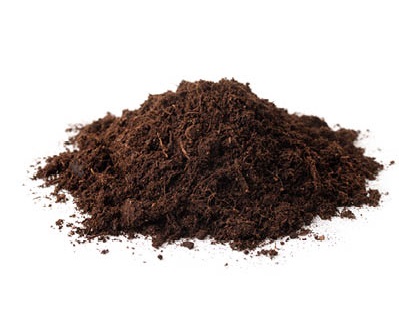
Peat formed by the accumulation of partially decayed vegetation or organic matter creates ecosystems in many places in Europe. Samples from these sites can easily exceed the most stringent local regulatory standards for C10-C40 due to the interference from biogenic compounds that are characteristic in their chromatographic profiles. Wood waste, compost, fertiliser-treated soils or tree needles and wood chips can also have a significant impact on false positive C10-C40 petroleum hydrocarbon results.
Florisil is also an integral part of the procedure for the analysis of C10-C40 in aqueous samples. It can easily eliminate some non-biogenic polar interferences, which can be, for example, various surfactants contained in some detergents.
Florisil clean-up standards for C10-C40 determination
Florisil is highly polar and the large active surface area of the molecules makes this amorphous form of magnesium silicate highly effective for the capture of polar compounds, typically their oxygenated forms. On the other hand, non-polar compounds typical of C10-C40 petroleum hydrocarbons remain in the extract and are analysed by GC-FID.
The procedure for Florisil clean-up of the sample extract is based on the above standards, where the use of 2 g Florisil for clean-up through the column (column chromatography) is recommended. However, the use of 'in situ' clean-up techniques is also acceptable, provided that the results are equivalent to those of the Florisil column test.
Based on practical experience, it can be underlined that clean-up of the extract through a Florisil loaded column is more effective in removing interfering polar compounds. The gradual flow of the extract through the Florisil-filled column provides a greater potential for interaction with new molecules of active Florisil than the case with the „in situ“ clean-up.
Minimising false positives
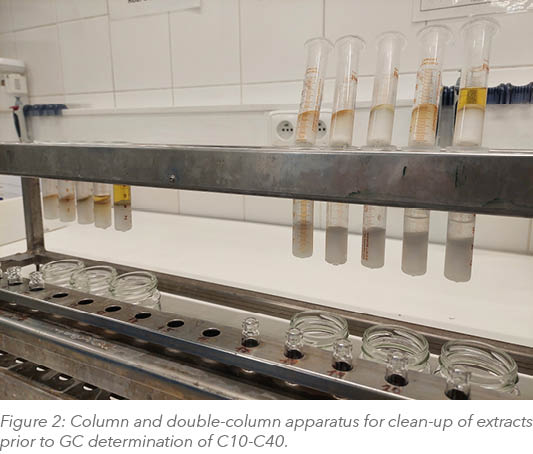
ALS Laboratories, of course, provide this efficient form of removal of interfering substances. In order to provide an optimal clean-up for samples where biogenic interferences are expected, a superior form of clean-up step through two columns, i.e. twice the amount of Florisil than is standardised in ISO standards, has also been developed.
Figure 2 shows the assembled apparatus for both standard and above-standard clean-up.
An example of how effectively Florisil cleaning works can be seen in the results of C10-C40 determination on a real soil sample. In Figure 3, the chromatographic profile is typical of the presence of peat when the extract has not been purified via Florisil prior to GC FID analysis (C10-C40: 428 mg/kg dry sample).
In contrast, Figure 4 shows how effective the clean-up was (C10-C40: 33.3 mg/kg dry sample). For this real sample example, up to 93% of the finding in the C10-C40 fraction was shown to be of biogenic origin.
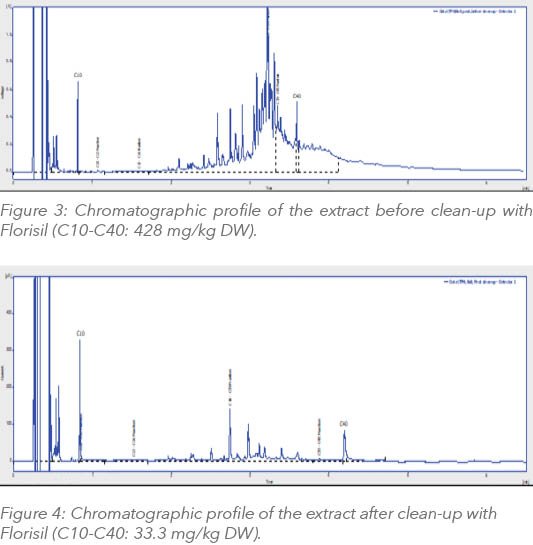
Chromatogram and qualitative assessment of contamination - oil pollution
Thanks to our highly qualified and professional staff, ALS Laboratories are always ready to advise and in most cases even specify the origin of the oil contamination.
After consultation, a chromatogram or even a more thorough qualitative assessment of the contamination can be provided after comparison of the chromatographic profile with the measured in-house library of standards on the GC-FID. An example of such a report in an appendix to the results may be the comparison in Figure 5 below.
